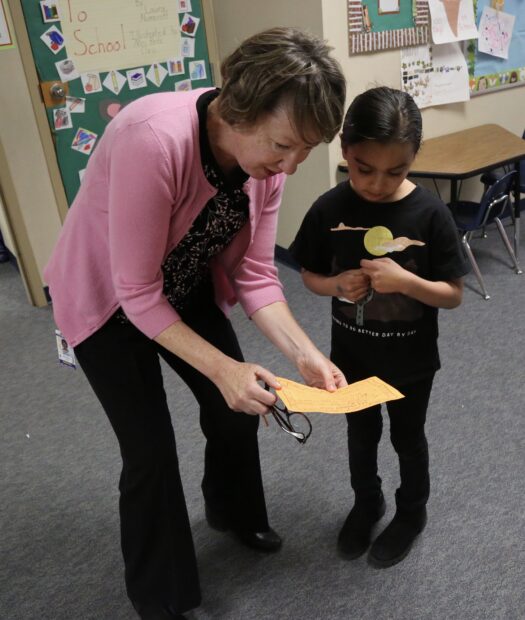
Educators at the Chief Joseph School of the Arts are fulfilling their namesake’s vision: help people achieve greatness and create a strong community.
That philosophy is propelling the school to academic excellence. Students far outperformed the state and district on standardized tests last year.
“I think it’s inclusiveness, where people feel welcomed and valued and important,” said principal Gretchen Hart. “It’s a place where kids want to come, because they know they’re going to be taken care of.”
Soft-spoken and demure, Hart is a veteran principal who is encouraging and supportive. She knows everyone’s name, and the smiling kids she encounters in her hallways glow when she acknowledges them.
Hart pulled out an article and highlighted an important message: “Believing that things can change is a prerequisite for actually changing them.”
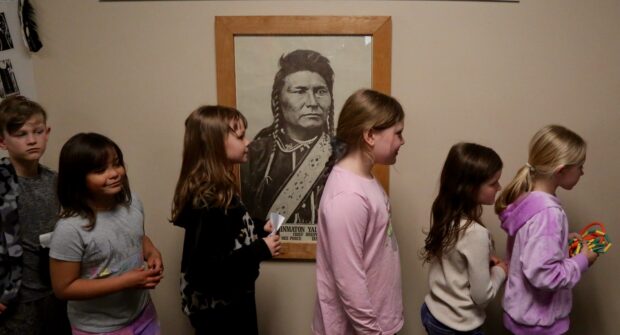
A neighborhood school with a worldwide neighborhood
In the West Ada School District, Chief Joseph elementary in Meridian serves dual roles as a school of choice for the arts and English learners (EL).
But this is truly a “neighborhood school.” Talkative 9-year-olds ride mountain bikes down sidewalks, while cautious parents drop off their kindergarteners and the morning staff ushers energetic kids into an oasis of learning.
Beneath the surface, however, is a level of diversity unique in Idaho schools. Across the state, there are three similar EL schools.
But educating students learning English and those with financial disadvantages hasn’t hampered their success.
The Department of Education recently named Chief Joseph as one of the best-performing schools in Idaho. That list of best schools this year is dominated with more affluent communities with far less diversity.
Almost 30% of the students at Chief Joseph are minorities and nearly 50% receive free or reduced price meals, a measure of poverty, according to the State Department of Education (SDE).
“I wouldn’t want to be at a school that doesn’t have this kind of diversity — I love it!” Hart said.
Diversity is one reason for the school’s success
At Chief Joseph, the EL program includes students who speak more than a dozen languages from diverse cultures, from the Middle East and Korean Peninsula, to Southeast Asia and South America.
“I think it makes our kids more curious, more open minded, and more tolerant of differences,” Hart said. “It makes them stronger learners.”
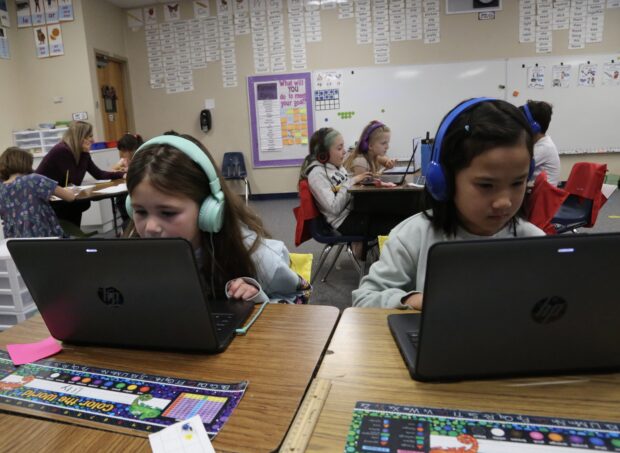
Those languages are Arabic, Bantu, Bosnian, Cambodian, Dari, Korean, Marathi, Portuguese, Russian, Spanish, Swahili, Vietnamese, and Japanese.
Approximately 95 of the school’s 526 students are English learners. And 39 of them are level one students attending an English-speaking school for the first time.
“We talk a lot at Chief Joseph about growth, rather than just simply proficiency, because for some of our kids, it’s going to be a long road to proficiency,” Hart said. “If they’re working hard, we’re gonna persevere.”
Chief Joseph students are exceptional on ISAT and IRI tests
That growth mindset is garnering consistent results in reading and math.
Scores were better than both the state and West Ada on the 2022 spring Idaho Reading Indicator, a screener for kindergarten through third-grade students.
Across the state, 68.2% of students were proficient readers; in West Ada 79.7% were. Chief Joseph’s 83.1% average was better by 14.9% over the state and 3.4% over the district. Two years ago, the school also outperformed both groups.
In 2022, the share of Chief Joseph students deemed proficient in reading and math by the Idaho Standards Achievement Test were higher than state and district averages. Their math score was nearly 30% over the state and reading was nearly 20% higher. They bested the district by 8% in both reading and math.
“I think we are also proud of the fact that every single subgroup matters, our kids with IEPs or kids who are facing homelessness. We’re going to grow all of them,” said Hart.
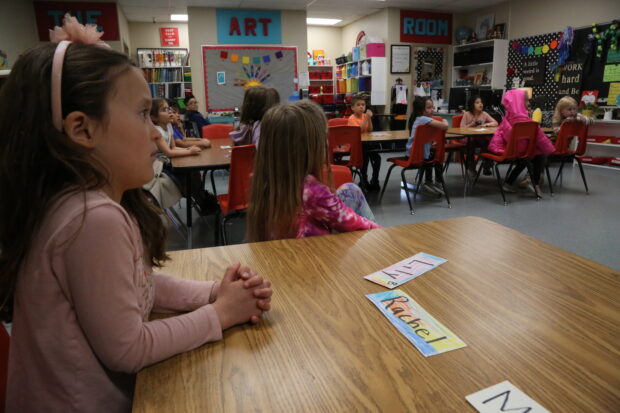
How do they achieve success?
Rigorous core instruction plus “productive struggle” underpins their efforts. “We make sure they know this is going to be hard, but that’s okay,” Hart said.
Skills groups address specific deficiencies beyond core instruction. Students practice and master their grade-level skills or receive enrichment above their grade level. Their Title 1 funds pay for four additional interventionists to help instruct these groups.
“High expectations and kindness — this is what we do achieve,” Hart said.
“We do our very best to support our staff too, so that they know that they’re making an awesome difference in kids’ lives.”
Idaho magnet schools and choice schools
“Magnet” schools offer a specific type of program outside of traditional instruction, like STEM, the arts, languages or international baccalaureate, according to the SDE. There are 24 magnet schools throughout Idaho.
“Choice schools” are online, charter, magnet or alternative schools. The SDE said there are 178 choice schools.
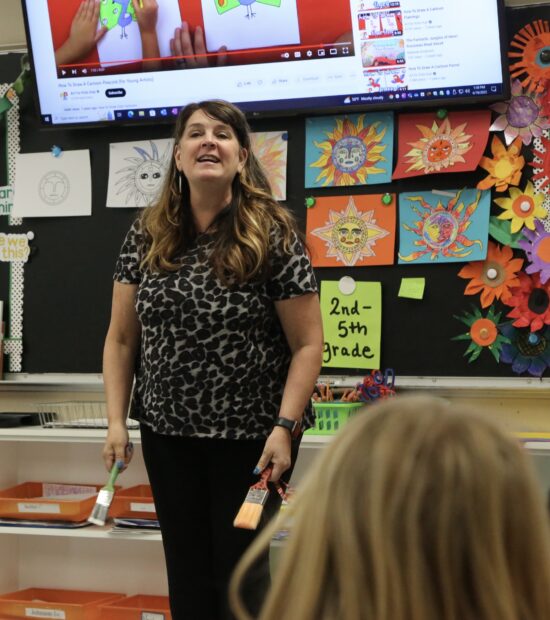
However, West Ada chooses to use the title “school of choice” for its magnet programs, one of which is Chief Joseph.
If there are more applicants than seats available, choice schools — or schools of choice in West Ada — rely on a lottery system similar to charter schools.
As an EL magnet, Chief Joseph employs two EL teachers and an EL paraprofessional who work alongside teachers.
“They have some competing forces happening in their brains. So they’re having to do double the work,” Hart said about EL students.
In addition, the school serves a community that is not affluent, yet they too are succeeding.
“Their brain is filled with other thoughts and needs,” Hart said. “I think when families feel economic stress, it trickles down to their kids.
“Until those basic needs are met, it’s really hard for them to focus on comprehension, or phonics. So we have a strong network of support for families, through our counselor and our social workers to try to get families the support they need.”
